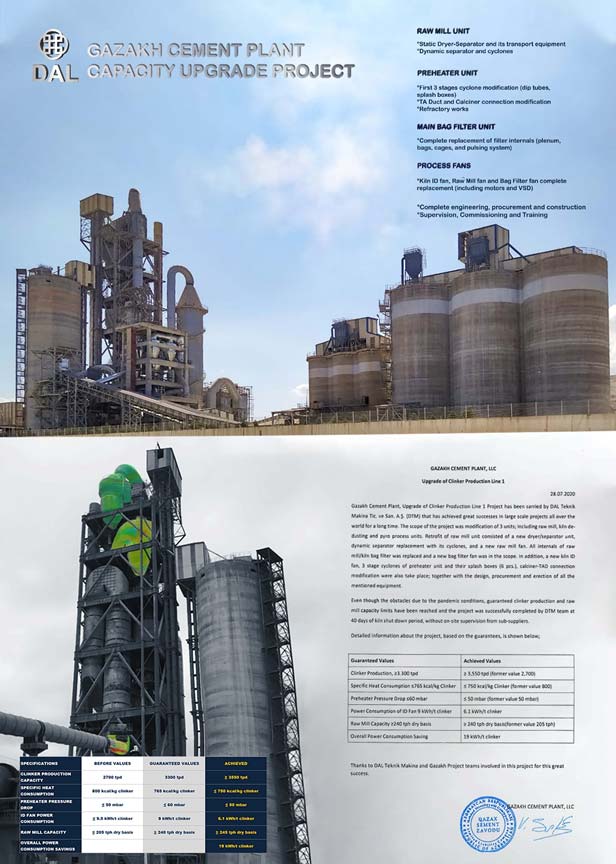ANKRAL RX is the first representative of a completely new series of rotary kiln bricks, the ANKRAL X-Series. Further products are already being developed to offer tailor-made products for different customer requirements.
“With the new, innovative spinosphere technology, RHI Magnesita is launching a product with unprecedented properties. After just over a year, our team in Research & Development succeeded in solving a problem that has been a hard nut to crack for the entire industry for a long time,” says Stefan Rathausky, Head of the Business Unit Cement/Lime at RHI Magnesita, with pride in this achievement. “Our customers will benefit from the new technology because it is now possible to achieve product properties for the most highly stressed areas of the rotary kiln which were previously incompatible with existing technologies. Clinker melt resistance and flexibility are no longer a contradiction.”
First installations for testing purposes have been in operation successfully since the beginning of the year, some of them in kilns with particularly challenging operating conditions. Further installations are planned and will be set up in the near future.
Low alumina content of ANKRAL RX
The first development based on the spinosphere technology is ANKRAL RX. Due to the choice of synthetic sintered magnesia as a basis, the brick exhibits very high chemical resistance to alkali salts. Thanks to the use of the new technology, the alumina content of the new brick amounts to only 4.5%. In comparison, a conventional magnesia spinel brick with comparable thermal shock resistance and flexibility would require an Al2O3 content of roughly 10-12%, which would, however, impair both its hot strength and clinker melt resistance.
Due to its low alumina content, ANKRAL RX is particularly suitable for kilns with high thermal loads and unfavorable clinker compositions involving a high risk of clinker melt infiltration, however, without compromising on flexibility. Hence, ANKRAL RX can be used to cover a wide range of application cases which may arise from the complex interaction of thermal, chemical and mechanical stresses in the rotary kiln.
Focus previously either on flexibility or hot strength
When the development of rotary kiln bricks began, chrome ore, a naturally occurring iron chrome spinel, was used. Due to the risks for people and the environment combined with the formation of hexavalent chromium and increased requirements driven by the use of alternative fuels, chrome ore was replaced by magnesium aluminate spinel (MgO.Al2O3), which is still the standard in many products today.
However, the use of spinels to increase thermal shock resistance (TSR) and flexibility is associated with a weakening of essential properties such as hot strength and clinker melt resistance. This is attributable to the formation of low-melting calcium aluminate phases in reaction with CaO, which is abundant in the clinker, but also to the secondary phases present in the brick.
This results in a dilemma in the development of bricks with high flexibility. An increase in the amount of spinel, in particular MA spinel, invariably leads to a reduction of hot strength and clinker melt resistance. In the past, the focus therefore had to be placed either on flexibility and TSR or on hot strength and clinker melt resistance when developing new products.
Higher flexibility without affecting hot strength
The solution of this problem has long been a focus of development at RHI Magnesita. The development of the hercynite technology was a first, very successful step in this direction. Significant progress has now been made with the development of the spinosphere technology: the flexibility of rotary kiln bricks without any substantial impairment of hot strength or clinker melt resistance. This was accomplished by a new production process for MA spinel, which reduces the alumina content of spinel by roughly 70% without diminishing its flexibilization properties. As a result, the formation of low-melting calcium aluminate compounds can be significantly reduced when firing bricks, and in operation in reaction with the clinker.
Spinel as a flexibilizer
In contrast to many other industries (steel, glass, and largely also nonferrous and EEC), kilns in the cement industry are not stationary units, but rotating kilns. This places special requirements on the lining of the kiln as the rotation leads to complex bending, tensile and shearing forces. Due to its high melting point and corrosion resistance to clinker melt, sintered magnesia is a nearly ideal starting material for the production of cement rotary kiln bricks. However, the high thermal expansion and thermal conductivity of MgO result in low thermal shock resistance and flexibility. Since these are crucial properties to achieve long lifetimes in a cement rotary kiln, another component must be added to improve these properties. So-called flexibilizers, which are essentially different types of spinel, are utilized for this purpose.

 English
English